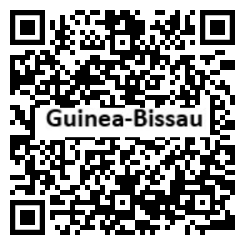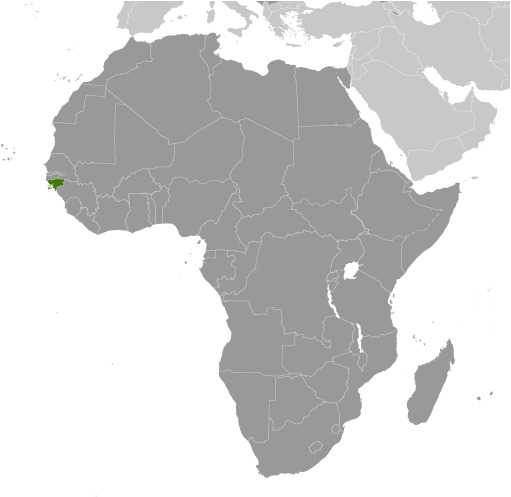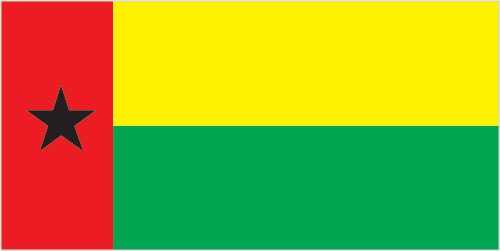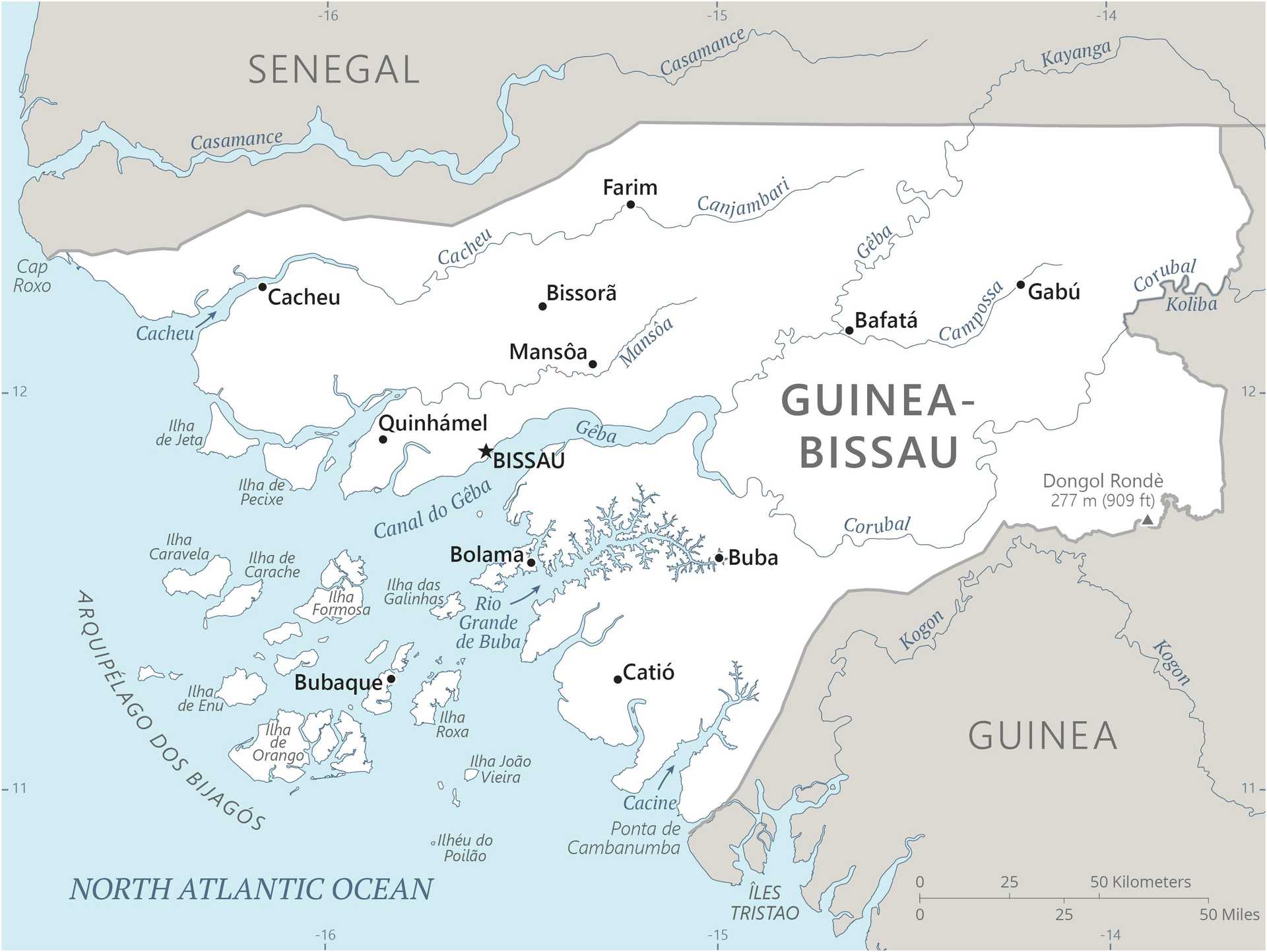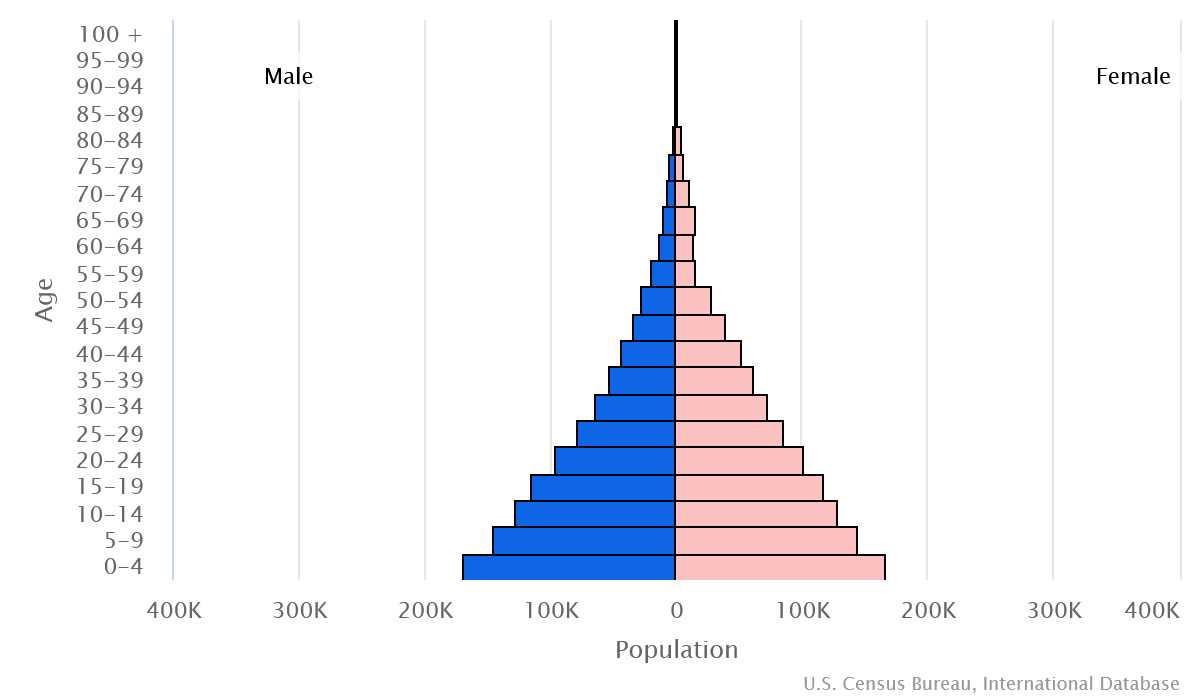Introduction
Background
Since independence from Portugal in 1974, Guinea-Bissau has experienced considerable political and military upheaval. Guinea-Bissau’s history of political instability, a civil war, and several coups (the latest in 2012) have resulted in a fragile state with a weak economy, high unemployment, rampant corruption, and widespread poverty.
Geography
Area
total : 36,125 sq km
land: 28,120 sq km
water: 8,005 sq km
Climate
tropical; generally hot and humid; monsoonal-type rainy season (June to November) with southwesterly winds; dry season (December to May) with northeasterly harmattan winds
Natural resources
fish, timber, phosphates, bauxite, clay, granite, limestone, unexploited deposits of petroleum
People and Society
Population
total: 2,132,325
Ethnic groups
Balanta 30%, Fulani 30%, Manjaco 14%, Mandinga 13%, Papel 7%, unspecified smaller ethnic groups 6% (2015 est.)
Languages
Portuguese-based Creole, Portuguese (official; largely used as a second or third language), Pular (a Fula language), Mandingo
Religions
Muslim 46.1%, folk religions 30.6%, Christian 18.9%, other or unaffiliated 4.4% (2020 est.)
Population growth rate
2.54% (2024 est.)
Government
Government type
semi-presidential republic
Capital
name: Bissau
Executive branch
chief of state: President Umaro Sissoco EMBALO (since 27 February 2020)
head of government: Prime Minister Rui Duarte DE BARROS (since 20 December 2023)
Legislative branch
description: unicameral National People's Assembly or Assembleia Nacional Popular (102 seats; 100 members directly elected in 27 multi-seat constituencies by closed party-list proportional representation vote and 2 elected in single-seat constituencies for citizens living abroad (Africa 1, Europe 1); all members serve 4-year terms)
Economy
Economic overview
extremely poor West African economy; ethnically diverse labor force; increasing government expenditures; slight inflation due to food supply disruptions; major cashew exporter; systemic banking instabilities and corruption; vulnerable to oil price shocks
Real GDP (purchasing power parity)
$5.099 billion (2023 est.)
$4.892 billion (2022 est.)
$4.694 billion (2021 est.)
Real GDP per capita
$2,400 (2023 est.)
$2,300 (2022 est.)
$2,300 (2021 est.)
Agricultural products
rice, groundnuts, cashews, root vegetables, oil palm fruit, plantains, cassava, vegetables, sweet potatoes, coconuts (2022)
Industries
agricultural products processing, beer, soft drinks
Exports
$280.065 million (2022 est.)
$334.904 million (2021 est.)
$232.536 million (2020 est.)
Exports - partners
India 92%, Cote d'Ivoire 2%, Togo 2%, Netherlands 1%, South Korea 1% (2022)
Exports - commodities
coconuts/Brazil nuts/cashews, fish, fish oil, palm oil, dried fruits (2022)
Imports
$577.899 million (2022 est.)
$518.162 million (2021 est.)
$439.386 million (2020 est.)
Imports - partners
Portugal 34%, Senegal 22%, China 14%, Netherlands 6%, Spain 3% (2022)
Imports - commodities
refined petroleum, steel, rice, flavored water, beer (2022)
Exchange rates
Communaute Financiere Africaine francs (XOF) per US dollar -
Page last updated: Wednesday, July 24, 2024
